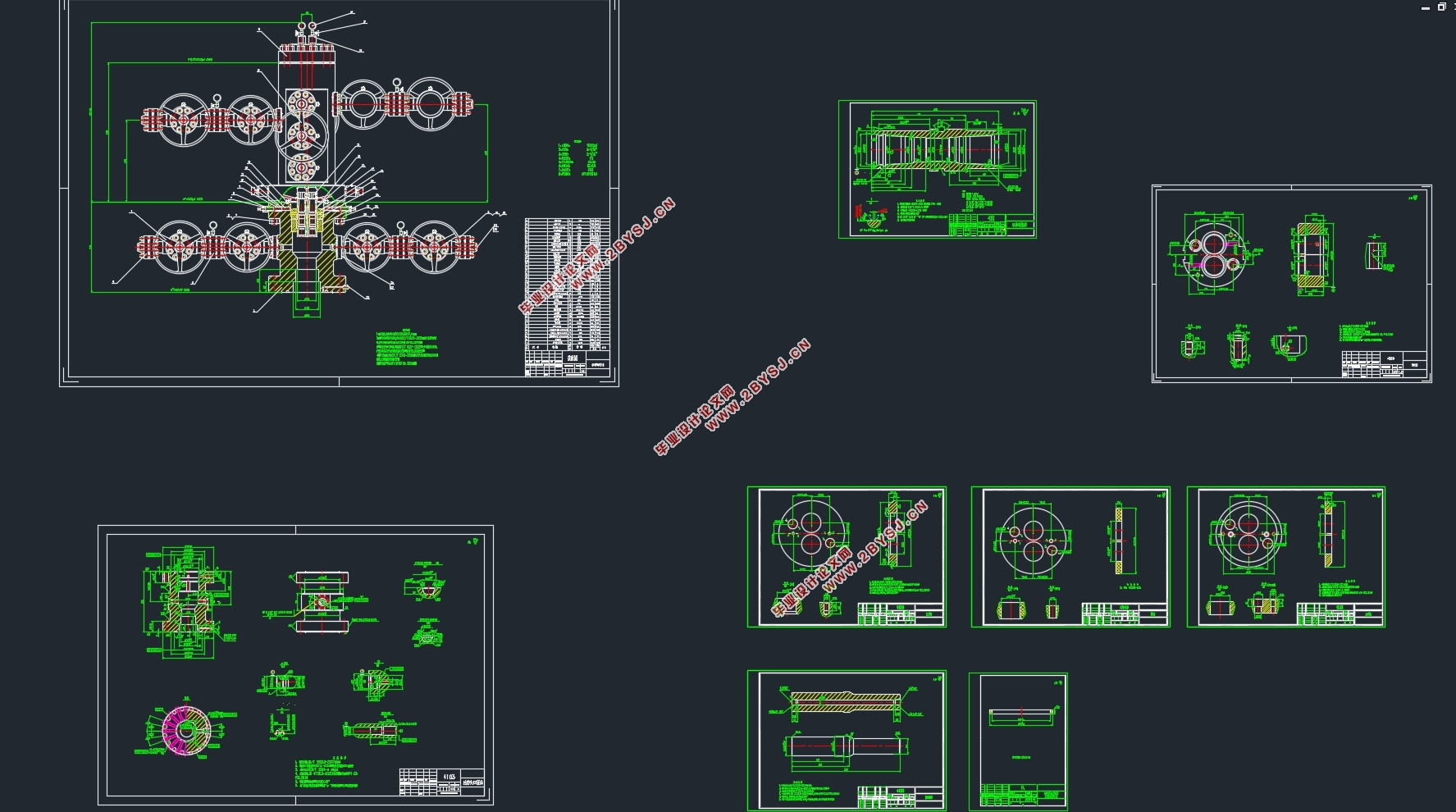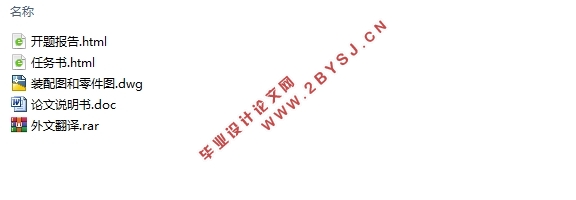履带式排水管道检测机器人运动机构设计(含CAD零件图装配图)
无需注册登录,支付后按照提示操作即可获取该资料.
履带式排水管道检测机器人运动机构设计(含CAD零件图装配图)(任务书,开题报告,外文翻译,论文说明书18000字,CAD图3张)
摘 要
本文主要介绍了履带式排水管道机器人在城市建设中的必要性和重要作用。由于我国对排水管道机器人的研究仍处于起步阶段,并且其还有很多关键问题尚待解决,课题源自于市政工程的需要,要研制一种能够在规定管径中完成检测任务的自动装置,该文的研究对于我国经济社会的发展具有重要意义。
论文首先阐述了排水管道检测任务的现状,分析了人工操作的局限性,提出了排水管道检测机器人的优点。探究了国内外对于排水管道机器人的研究状况,针对存在的问题制定了总体方案。对机器人的运动功能的几种方式进行了比较与分析,最终确定了现有的运动方式。对检测功能及控制功能进行了论述与分析,确定了各项功能的实现方法与具体措施。
对机器人的运动机构的各部分进行了具体的设计,并对主要零部件进行了校核。
关键词:管道检测;履带式机器人;结构设计;校核
Abstract
This paper mainly introduces the necessity and important role of crawler drainage robots in urban construction. As China's research on drainage pipeline robots is still in its infancy, and there are still many key issues to be solved, the topic arises from the needs of municipal engineering, and it is necessary to develop an automatic device that can perform inspection tasks in the specified pipe diameters. The research of this article is of great significance to the development of our country's economy and society.
The paper first elaborates the current status of the drainage pipeline inspection task, analyzes the limitations of the manual operation, and proposes the advantages of the drainage pipeline inspection robot. The status of research on drainage pipeline robots at home and abroad was explored, and an overall plan was formulated based on the existing problems. Several methods of the robot's movement function were compared and analyzed, and the existing movement method was finally determined. The examination function and control function were discussed and analyzed, and the realization methods and concrete measures of each function were determined.
The specific design of each part of the movement mechanism of the robot was carried out, and the main parts were checked.
Key Words:Pipeline inspection; Tracked robots; Structural design; Checking
管道机器人的总体方案设计
2.1管道机器人系统指标
适应管径: mm
移动速度:
电源:内部电池为伺服电机供电
驱动力大小:
作业能力:作业速度为
2.2管道机器人功能分析
管道检测机器人由机械主体结构,传感器模块,控制模块,动力源等部分组成。实现机器人的主要功能有:运动功能、检测功能及控制功能。
2.2.1运动功能
管道检测机器人在管道中的运动主要有直线运动、转弯运动及爬坡运动三种运动形式。其中直线运动和爬坡运动需要一定的驱动力,设计驱动力为800N.
在城市排水管道系统中,弯管,直管和歧管都非常常见,其中,直角弯管是最常见的弯管。我们要保证机器人能顺利通过一定尺寸的直角弯管,否则,会影响机器人的正常工作。转弯时,由于管道检测机器人尺寸及结构的限制,会发生机器人卡死的情况,这时的驱动力非常大,长时间的大负荷工作会使电机严重发热以至于烧坏电机,导致机器人滞留在管道中,引发事故。因此,我们应分析机器人的过弯特性,合理设计机器人的结构尺寸,保证机器人有较高的适应度。



目 录
第1章 绪论 1
1.1 目的与意义 1
1.2 国内外现状和发展趋势 2
1.3 毕业设计主要内容 3
1.4 结论 3
第2章 管道机器人的总体方案设计 4
2.1 管道机器人系统指标 4
2.2 管道机器人功能分析 4
2.2.1 运动功能 4
2.2.2 检测功能 6
2.2.3 控制功能 7
2.3 管道机器人功能实现方法 8
2.3.1 运动功能的实现 8
2.3.2 检测功能实现 11
2.3.3 控制功能实现 14
2.3.4 总体方案 14
第3章 主要零部件设计及计算 16
3.1 传动装置 16
3.1.1 履带轮的设计 16
3.1.2 驱动方式 16
3.1.3 传动齿轮设计 18
3.1.4 驱动轴的设计 21
3.1.5 主动轴的设计 27
3.1.6 从动轴的设计 32
3.2 支承系统 32
3.2.1 轴承座的设计 32
3.2.2 电机固定架的设计 33
3.3 其他结构 33
3.3.1 密封结构的设计 33
3.3.2 定位结构的设计 34
第4章 总结 35
参考文献 36
致谢 37
